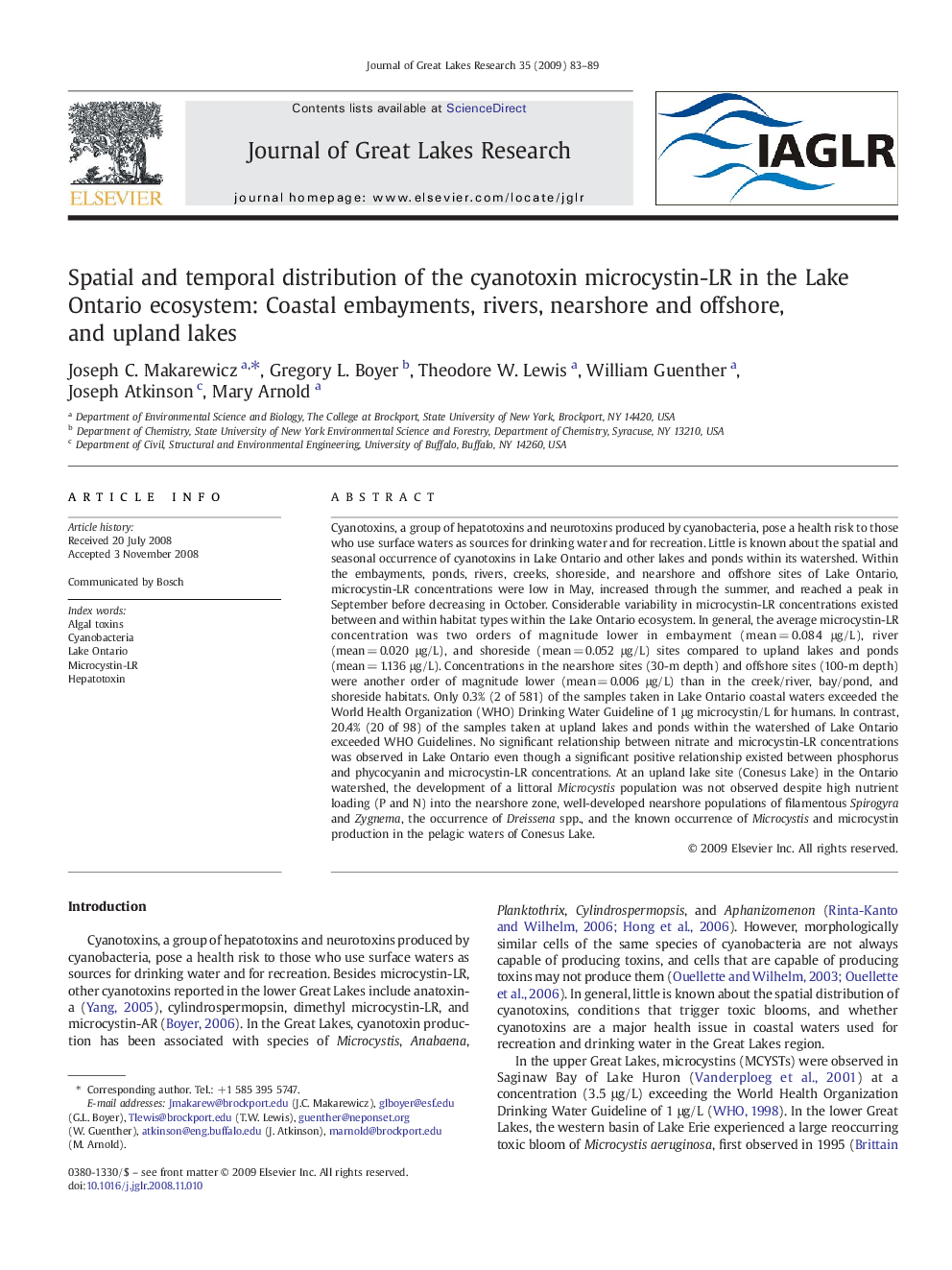| Article ID | Journal | Published Year | Pages | File Type |
|---|---|---|---|---|
| 4399182 | Journal of Great Lakes Research | 2009 | 7 Pages |
Abstract
Cyanotoxins, a group of hepatotoxins and neurotoxins produced by cyanobacteria, pose a health risk to those who use surface waters as sources for drinking water and for recreation. Little is known about the spatial and seasonal occurrence of cyanotoxins in Lake Ontario and other lakes and ponds within its watershed. Within the embayments, ponds, rivers, creeks, shoreside, and nearshore and offshore sites of Lake Ontario, microcystin-LR concentrations were low in May, increased through the summer, and reached a peak in September before decreasing in October. Considerable variability in microcystin-LR concentrations existed between and within habitat types within the Lake Ontario ecosystem. In general, the average microcystin-LR concentration was two orders of magnitude lower in embayment (mean = 0.084 μg/L), river (mean = 0.020 μg/L), and shoreside (mean = 0.052 μg/L) sites compared to upland lakes and ponds (mean = 1.136 μg/L). Concentrations in the nearshore sites (30-m depth) and offshore sites (100-m depth) were another order of magnitude lower (mean = 0.006 μg/L) than in the creek/river, bay/pond, and shoreside habitats. Only 0.3% (2 of 581) of the samples taken in Lake Ontario coastal waters exceeded the World Health Organization (WHO) Drinking Water Guideline of 1 μg microcystin/L for humans. In contrast, 20.4% (20 of 98) of the samples taken at upland lakes and ponds within the watershed of Lake Ontario exceeded WHO Guidelines. No significant relationship between nitrate and microcystin-LR concentrations was observed in Lake Ontario even though a significant positive relationship existed between phosphorus and phycocyanin and microcystin-LR concentrations. At an upland lake site (Conesus Lake) in the Ontario watershed, the development of a littoral Microcystis population was not observed despite high nutrient loading (P and N) into the nearshore zone, well-developed nearshore populations of filamentous Spirogyra and Zygnema, the occurrence of Dreissena spp., and the known occurrence of Microcystis and microcystin production in the pelagic waters of Conesus Lake.
Related Topics
Physical Sciences and Engineering
Earth and Planetary Sciences
Earth and Planetary Sciences (General)
Authors
Joseph C. Makarewicz, Gregory L. Boyer, Theodore W. Lewis, William Guenther, Joseph Atkinson, Mary Arnold,
